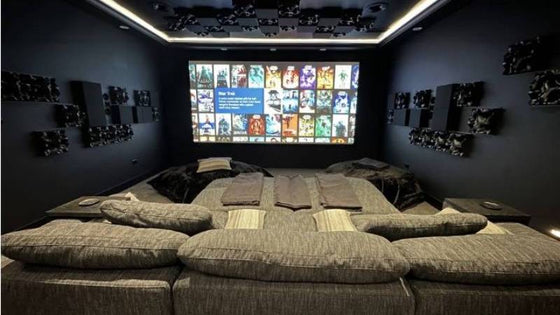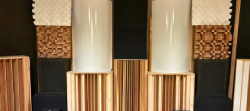Creating a system you love shouldn't be difficult. The Acoustic Frontiers blog is here to help.
Last week I presented a behind-the-scenes look at the strategy for Acoustic Frontiers going into the rest of 2011 and 2012. One of the things I promised was an opinion article each month that provided insight into what we think is going on in the world of high end audio and home theater. The first article is going to look at the value for money equation in acoustic design consulting. You can get a summary by just reading the first section. If you want to understand more about the thought process that went into the diagram continue on...
Since I have been offering acoustic design consulting I have come to the conclusion that there are three different levels available to the end consumer. Each level offers a certain quality and cost level. By quality I am referring to how good the room sounds at the end of whatever design process is undertaken.
I've summarized this relationship in the chart that follows.
You will see by following the red line (the 'value curve') that a good level of quality is realized at quite low cost from the acoustic treatment companies. As the curve enters the second level, where the new-breed of acoustical designers operate a small cost increase leads to a significant increase in quality. At the top you enter the realm of the specialist design companies. There are still quality gains to be had but they come at significant cost.
The first level on the quality vs. price curve is what you get when you utilize the "design" services of an acoustic treatment company. Acoustic Sciences Corporation (ASC), RealTraps and GIK Acoustics all offer "design" services. I say design in inverted commas because their version of acoustic design isn't what I would call acoustic design. It doesn't include diagnostic or verification measurements which I view as critical to creating a design that solves the problems of each particular room.
It is important to understand the economic imperatives at work in this level:
The factors influencing quality at this level are:
At the third level you have companies who have traditionally specialized in very high end home theaters. They are design companies first and foremost. You get people who are certified CEDIA instructors (Tony Grimani from PMI) and companies that are pushing the state-of-the-art in acoustic design. Keith Yates Design Group (KYDG) have come up with ways to model the low frequency reproduction in a room using computational fluid dynamics (CFD) that is extremely accurate - apparently down to 1dB or so.
Their deliverable is a set of very detailed CAD drawings showing you where every nut and bolt goes in the construction of you new room. The construction is then completed by a third party using these blueprints.
One of the other aspects these companies focus on is noise isolation - that is how much noise gets into the room and how much gets out. Achieving high noise isolation requires complex (and costly) construction techniques.
At this level the only factors influencing quality are how deep you wallet is. Designs start at $20k and up! If you have the money, and you want the best of the best, these are the guys to go for.
As a result you don't tend to see their work in 'enthusiast' circles. Most 'enthusiasts' don't have the money required for a KYDG or PMI room. For the rest of us we need to find another option, something between the design companies and the acoustic treatment companies...
Starting at $1,500 or so (10x less than the specialist design companies) you can get an in-depth acoustical design for your high end home theater or listening room. My own company, Acoustic Frontiers, and HdAcoustics operate in this space. I am sure there are others out there too.
The key differentiators from acoustic treatment companies are our:
In terms of our service offerings we can offer many of the more advanced analyses that specialist design companies produce such as the ability to simulate frequency response at different points in the room, compensate for the radiation pattern of different speakers such as dipoles and design custom bass traps.
Generally we focus less on noise isolation and documentation. A lot of our work is with retrofit installations where these elements are much less relevant - in an existing room most enthusiasts do not want to start tearing walls down and many are just interested in applying surface based acoustical treatment rather than custom building things into the fabric of the room.
Shortly after starting Acoustic Frontiers in 2009 I received these words from a client. His words sum up what these types of companies up nicely:
"I did not have any luck finding a consultant to work with during the design phase. I was basically trying to give someone an opportunity to design a good room from the grounds up, but at the same time not breaking my piggy bank. Companies that I talked to were either at one end of a spectrum where they just want to tell me what after-market acoustic products I should stick into my room post-construction, or at the other end where they want to charge me at least $50k to design a professional studio." Frank C, San Francisco Bay Area.
The three main types of companies providing services to end customers each have something different to offer:
Readers - what do you think of the value for money equation in acoustic design?
This media room was intentionally designed to feel like part of the home—not a separate, tech-heavy space. Through careful acoustic planning, equipment integration, and final calibration, we achieved a room that is both beautiful to live in and immersive to experience.
"No other subwoofer system I’ve owned even comes close to what this room delivers. Reaching out to Acoustic Frontiers was one of the best decisions I’ve made—I highly recommend working with them if you want to get the most out of your theater."

Nyal Mellor, Founder, Acoustic Frontiers



Nyal Mellor
Author